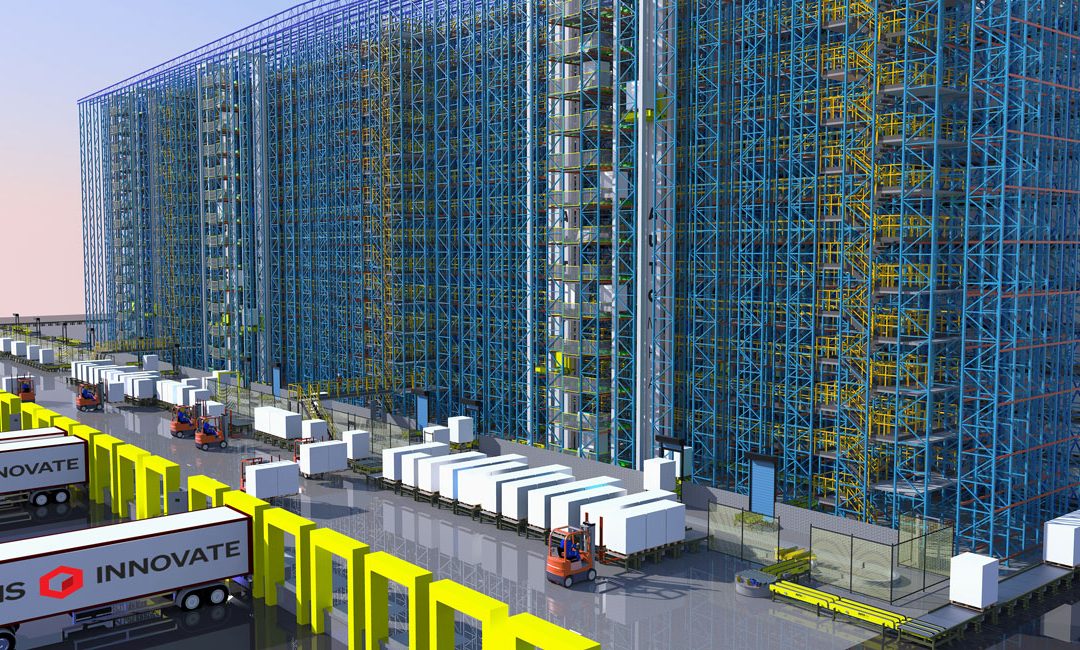In today’s dynamic manufacturing and logistics environment, factory automation has become indispensable for businesses aiming to enhance efficiency and competitiveness. However, to fully leverage the benefits of automation, it’s essential to integrate it into the planning and design of new building developments from the outset.
In this blog post, we’ll explore why early integration of factory automation is crucial for manufacturers, consultant engineers, and project managers, as we as delving into the key factors to consider during the design phase.
Understanding Factory Automation
Factory automation encompasses a variety of technologies, including robotics, conveyor systems, and automated storage and retrieval systems (AS/RS). Put simply, these innovations offer numerous advantages, such as increased productivity, reduced labour costs, and improved inventory management accuracy. By automating repetitive tasks and optimising processes, businesses can boost efficiency and adapt to market changes more effectively.

Challenges of Retrofitting Automation
Retrofitting automation into existing warehouse structures can present a myriad of challenges, including structural limitations, infrastructure compatibility issues, and disruptions to operations. Older facilities may lack the space, layout configurations, or infrastructure necessary to support advanced automation technologies, necessitating costly modifications and upgrades. Furthermore, the installation process often results in significant downtime and operational disruptions, impacting productivity and requiring careful planning to minimise adverse effects.
Cost considerations also loom large, as retrofitting automation involves substantial upfront investments in equipment, infrastructure upgrades, and integration efforts. Managing cost overruns and ensuring a solid return on investment amidst technical complexities and employee resistance pose additional hurdles. Scalability and future-proofing are crucial considerations, as retrofitted systems may lack adaptability to future growth or technological advancements.
Despite these challenges, successful retrofitting efforts can yield substantial efficiency gains and competitive advantages, provided businesses navigate the complexities with thorough planning, collaboration with experienced partners (such as PHS Innovate), and a commitment to addressing operational and workforce concerns.
Early Integration: Advantages and Considerations
Integrating factory automation into the initial planning and design stages provides several benefits. Firstly, it enables businesses to optimise space requirements for future automation technologies. Designing with automation in mind allows for flexible layouts that can adapt to evolving needs and technologies. Secondly, early integration helps mitigate potential challenges and risks associated with retrofitting automation later on. Addressing automation needs upfront can prevent costly modifications and ensure smooth implementation.
A crucial aspect of early integration involves considering suitable floor and foundation design tailored to the specific needs of automation. Unlike standard static pallet racking structures, automated systems impose unique demands on flooring and foundations due to increased loads, dynamic movements, and precise alignment requirements. Robust flooring capable of withstanding heavy loads and maintaining flatness is essential, along with foundations engineered to support the weight and vibrations of automated machinery. Incorporating these considerations into the design phase ensures that the built environment optimally supports the efficiency and performance of automated systems.
Key Factors to Consider in Designing for Factory Automation
- Flexibility and Scalability: Designing warehouses with flexible layouts and scalable infrastructure enables businesses to adapt to changing operational requirements and accommodate future automation upgrades. Incorporating modular components and flexible storage solutions facilitates easier reconfiguration as automation needs evolve.
- Infrastructure Requirements: Factory automation systems require robust infrastructure, including adequate power supply, connectivity, and data infrastructure. Ensuring sufficient capacity and redundancy in these systems is crucial to support the seamless operation of automated processes.
- Safety Considerations: Safety should be a top priority when designing for factory automation. Implementing safety measures such as protective barriers, sensors, and emergency stop systems helps prevent accidents and ensures compliance with regulations. Additionally, providing comprehensive training for employees working alongside automated systems is essential to maintaining a safe working environment.
Collaboration among Stakeholders
Effective collaboration between manufacturers, consultant engineers, and project managers is vital for successful integration of factory automation. By involving all stakeholders from the outset, businesses can leverage their expertise and insights to develop holistic automation solutions that meet operational needs and project objectives. In short, working collaboratively from the outset of a design and build is going to result in a more successful project!
About PHS Innovate. From our engineering base in New Zealand, PHS Innovate offer customised materials handling products and systems across Australia, New Zealand, and the Pacific region. Whether you’re a multinational company with complex production lines or a smaller artisan business looking to scale up, we build solutions that fit your specific needs. Contact us today to discuss your project.

